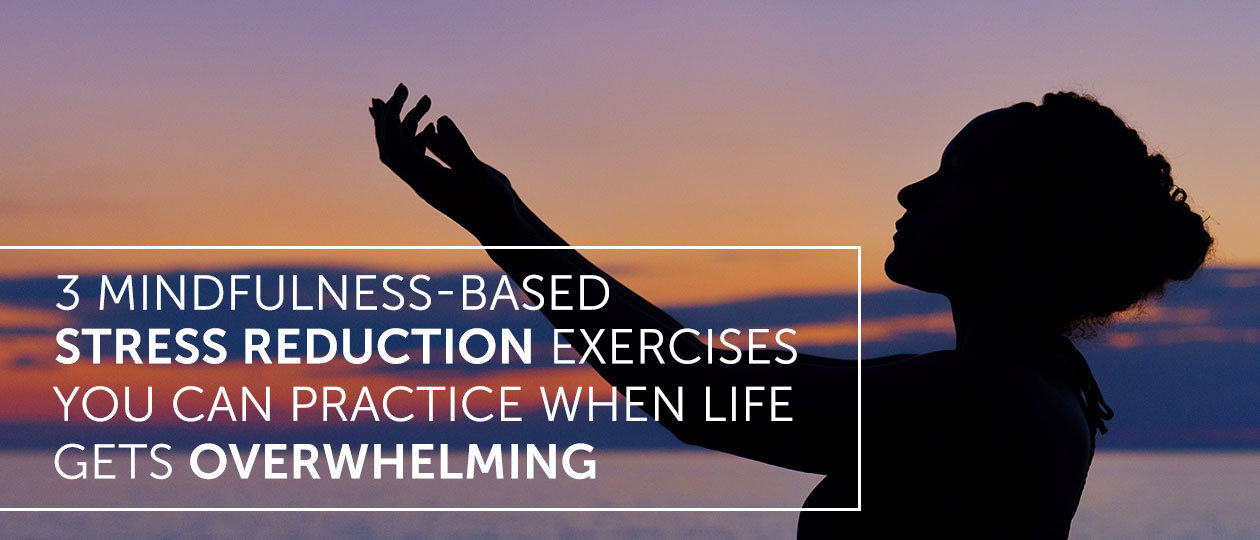Three Easy Exercises to Reduce Stress and Build Mindfulness
Last week we talked about the incredibly destructive effects of chronic stress and anxiety. No one wants to live an anxious life. Everyone wants to feel alert and fulfilled, which means living in the present moment in peace and mindfulness. Today, I’m going to give you three easy exercises that you can use to reduce your daily stress and build mindfulness.
Change the Channel
According to Antonio Damasio, MD, PhD, and head of the neuro department at the University of Southern California, there is no such thing as imageless thought. Everything that we feel and think is run through a filter based on the internal picture we have related to what we are experiencing at that moment. If you feel stressed, or frustrated, or anxious, there is an image at the source of that feeling 100 percent of the time. These negative images typically come from wrong beliefs, based on memories that our subconscious perceives as traumatic. The good news is, you can change them. Try to recognize when you’re going through some of these negative feelings, then make an intentional effort to change your internal picture to something positive. If possible, choose a picture related to the same issue, but one that makes you feel at peace. If you can’t think of one, then just choose a memory that made you feel calm and peaceful. You can even make something up! With a bit of practice, this works very well, but keep in mind that it doesn’t really fix the source issue. Once you do that, you won’t need this exercise anymore. You’ll have a new default.
Use Your Pulse-Rate as a Guide
In his wonderful book, The Pulse Test, Dr. Arthur Coca, MD, explores how your pulse rate can be a powerful diagnostic to show what stresses or calms you. Once upon a time, this sort of thing was difficult. Most people aren’t good at checking their own pulse, and equipment that measured it was uncommon and expensive. Today, you can buy a finger pulse reader on Amazon for twelve bucks. When you find yourself stressed or anxious, slip it on before you begin experimenting with different thoughts and feelings until your pulse rate decreases by 10 to 15 percent. For example, you might focus on the word “peace,” or on an image of a calm, still lake. Again, this is very useful, but don’t neglect the source, or you’ll be using this bandage forever.
Pray
Prayer is actually my number one choice for reducing stress. I do it every day, and can’t recall a single time in my life when it has failed to reduce my stress, far beyond any other method. Dr. Larry Dossey in his book, Reinventing Medicine, cited double-blind studies that found people who prayed, or were anonymously prayed for, became sick less often, scored higher on emotional adjustment scales, and generally performed better by many clinical measures. Another neurologist, Dr. Andrew Newberg, spent years determining how different things damage or heal the brain and nervous system, and found that belief in God was by far the most healing thing you could do for your brain, with exercise a distant second. Well, you can’t heal the brain without also eliminating anxiety.
If you’re going to try just one of these methods, I would advise you to try prayer, but it’s better to try all of them, as they work very well together. No matter how inescapable the issue may seem, we DO have the tools to reduce or even eliminate anxiety from a large portion of our lives. If you haven’t yet, check out some of my other blog posts on how you can dive deep and tear out your stress and anxiety by the roots.
Have a blessed, wonderful day!




Add a Comment